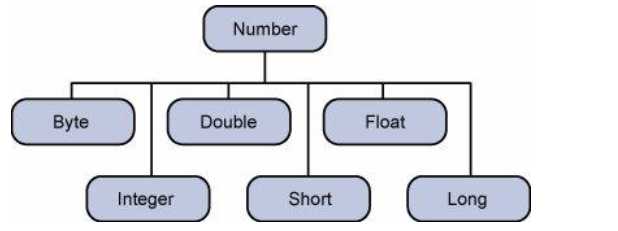1、Object类
Object类的基本方法:
getClass()、hashcode()、equals()、clone()、finalize()、toString()
public final native Class<?> getClass() //返回此 Object 运行时的类 public native int hashCode() //返回对象的哈希码 public boolean equals(Object obj) //判断其他对象与此对象是否“相等” protected native Object clone() throws CloneNotSupportedException //创建并返回此对象的一个副本 public String toString() //返回对象的字符串表示 protected void finalize() throws Throwable {} //垃圾回收时调用该方法
public final native void notify() //唤醒在此对象监视器上等待的单个线程 public final native void notifyAll() //唤醒在此对象监视器上等待的所有线程 public final native void wait(long timeout) throws InterruptedException //使当前对象的线程等待 timeout 时长 public final void wait(long timeout, int nanos) throws InterruptedException //使当前对象的线程等待 timeout 时长,或其他线程中断当前线程 public final void wait() throws InterruptedException //使当前对象的线程等待
2、基本数据类型:
byte、int、short、long、double、float、boolean、char;
对应的包装类型也有八种:Byte、Integer、Short、Long、Double、Float、Character、Boolean;(已final,不可重写)
将基本数据类型 转成 对象包装类型------装箱,反之为拆箱
public static void main(String[] args) { int num1 = 1; //将基本数据类型装箱成对象包装类型,编译器内置方法 Integer num2 = num1; Integer num3 = 3; //将对象数据类拆箱,该方法是java.lang.Number类中的 int num4 = num3; }
继承关系:Number类是 基本数据类型包装类 的父类

Number类:
package java.lang; public abstract class Number implements java.io.Serializable { public abstract int intValue(); \\拆箱方法 public abstract long longValue(); public abstract float floatValue(); public abstract double doubleValue(); public byte byteValue() { return (byte)intValue(); } public short shortValue() { return (short)intValue(); } private static final long serialVersionUID = -8742448824652078965L; }
Integer类常用方法:
1 parseInt(String s)将字符串转换成Int
2 toString() 转换成字符串
3 还有一种方法,任何类型+“ ” 即变成String类型
4 max()、min()。两个int的比较
两个静态成员变量:MAX_VALUE;MIN_VALUE(在其他数值类型中也有相同变量)
5 compare方法,比较两个数。返回-1、0、1
public class BasicNumber { public static void main(String args[]) { //最大最小值 int intmax=Integer.MAX_VALUE; int intmin=Integer.MIN_VALUE; System.out.println(intmax);System.out.println(intmin); //String to Int String string="55"; int testInt=100; System.out.println(Integer.parseInt(string)+12);//parseInt方法 System.out.println(Integer.toString(testInt));//toString方法 System.out.println(String.valueOf(testInt));//valueOf方法 System.out.println(testInt+"");//+""的隐式转换 //查看int占用的位数 System.out.println(Integer.SIZE); //compare方法 int intbig=17; int intsmall=6; System.out.println(Integer.compare(intsmall, intbig)); } }
character类
Character类的判断功能:
public static boolean isDigit(char ch)
确定指定字符是否为数字。
public static boolean isLetter(char ch)
确定指定字符是否为字母。
public static boolean isLowerCase(char ch)
确定是否是小写字母字符
public static boolean isUpperCase(char ch)
确定是否大写字母字符
两个转换功能:
public static int toLowerCase(char ch)
使用取自 UnicodeData 文件的大小写映射信息将字符参数转换为小写。
public static int toUpperCase(char ch)
使用取自 UnicodeData 文件的大小写映射信息将字符参数转换为大写。
原文:https://www.cnblogs.com/EvanZhuBlog/p/13814322.html